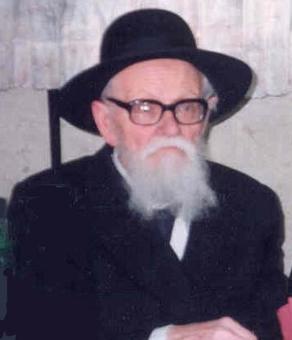
Shabbat or the Sabbath, also called Shabbos by Ashkenazim, is Judaism's day of rest on the seventh day of the week—i.e., Saturday. On this day, religious Jews remember the biblical stories describing the creation of the heaven and earth in six days and the redemption from slavery and The Exodus from Egypt, and look forward to a future Messianic Age. Since the Jewish religious calendar counts days from sunset to sunset, Shabbat begins in the evening of what on the civil calendar is Friday.
The 39 Melakhot are thirty-nine categories of activity which Jewish law identifies as prohibited by biblical law on Shabbat. Many of these activities are also prohibited on the Jewish holidays listed in the Torah, although there are significant exceptions that permit carrying and preparing food under specific circumstances on holidays.

Kosher wine is wine that is produced in accordance with halakha, and more specifically kashrut, such that Jews will be permitted to pronounce blessings over and drink it. This is an important issue, since wine is used in several Jewish ceremonies, especially those of Kiddush.

An eruv is a ritual halakhic enclosure made for the purpose of allowing activities which are normally prohibited on Shabbat, specifically: carrying objects from a private domain to a semi-public domain (carmelit), and transporting objects four cubits or more within a semi-public domain. The enclosure is made within some Jewish communities, especially Orthodox Jewish communities.

Halakha addresses a number of topics applicable to tobacco and cigarette smoking. These include the health impacts of smoking; the permissibility of smoking on holidays and fast days, and the impacts of second-hand smoke on other people.

Eliezer Yehuda Waldenberg was a rabbi, posek, and dayan in Jerusalem. He is known as a leading authority on medicine and Jewish law and referred to as the Tzitz Eliezer after his 21-volume halachic treatise covering a wide breadth of halacha, including Jewish medical ethics, and daily ritual issues from Shabbat to kashrut.
Rabbi Hershel Schachter is an American Orthodox rabbi, posek and rosh yeshiva (dean) at Rabbi Isaac Elchanan Theological Seminary (RIETS), part of Yeshiva University (YU) in New York City.
Sabbath mode, also known as Shabbos mode or Shabbat mode, is a feature in many modern home appliances, including ovens, dishwashers, and refrigerators, which is intended to allow the appliances to be used by Shabbat-observant Jews on the Shabbat and Jewish holidays. The mode usually overrides the usual, everyday operation of the electrical appliance and makes the operation of the appliance comply with the rules of Halakha.
A Shabbos goy, Shabbat goy or Shabbes goy is a non-Jew who is employed by Jews to perform certain types of work (melakha) that Jewish religious law (halakha) prohibits a Jew from doing on the Shabbat.

Shabbat is the first tractate of Seder Moed of the Mishnah and of the Talmud. The tractate deals with the laws and practices regarding observing the Jewish Sabbath. The tractate focuses primarily on the categories and types of activities prohibited on the Sabbath according to interpretations of many verses in the Torah, notably Exodus 20:9–10 and Deut. 5:13–14.

Yehoshua Yeshaya Neuwirth was an eminent Orthodox Jewish rabbi and posek in Jerusalem. He was one of the primary students of Rabbi Shlomo Zalman Auerbach and the author of a two-volume Hebrew language treatise, Shemirat Shabbat Kehilchatah — translated into English as Shemirath Shabbath: A practical guide to the observance of Shabbath — a compendium of the laws of Shabbat which is viewed by many as an authoritative work regarding these laws.
In Judaism, a person who is shomer Shabbat or shomer Shabbos is a person who observes the mitzvot (commandments) associated with Judaism's Shabbat, or Sabbath, which begins at dusk on Friday and ends after sunset on Saturday.

The Zomet Institute is an Israeli high-tech non-profit organization specializing in IT equipment and electronic appliances designed to meet Halakha.

A Shabbat lamp is a special lamp that has movable parts to expose or block out its light so it can be turned "on" or "off" while its power physically remains on. This enables the lamp's light to be controlled by those Shabbat observant Jews who accept this use, to make a room dark or light during Shabbat without actually switching the electrical power on or off, an act prohibited by Orthodox Judaism on both Shabbat and the Jewish Holidays.

According to halacha, the operation of a motor vehicle constitutes multiple violations of the prohibited activities on Shabbat. Though Jewish law is based on texts that were written long before the existence of the automobile, when driving one performs various actions which the texts specifically prohibit.

Electricity on Shabbat refers to the various rules and opinions regarding the use of electrical devices by Jews who observe Shabbat. Various rabbinical authorities have pronounced on what is permitted and what is not, but there are many disagreements in detailed interpretation, both between different individual authorities and between branches of Judaism.
In Jewish religious law (halakha), Jews are commanded to rest on Shabbat, and refrain from performing certain types of work. Some of the activities are considered to be prohibited by biblical law, while others became prohibited later on, due to rabbinic decrees. These rabbinic Shabbat prohibitions are collectively known as shevut (שבות).
In Halacha a pesik reisha is an action that ordinarily would be permitted but which will definitely cause an unintended prohibited side effect. A classic case of a Pesik reisha found in the Talmud is opening a door next to a candle on Shabbos where the candle will definitely be blown out.

The Shabbos App claimed to be a proposed Android app to enable Orthodox Jews, and Jewish Sabbath-observers, to use a smartphone on the Sabbath. The app was supposed to appear in late 2014. Some argued from the outset that this project was nothing more than an elaborate hoax or prank.












